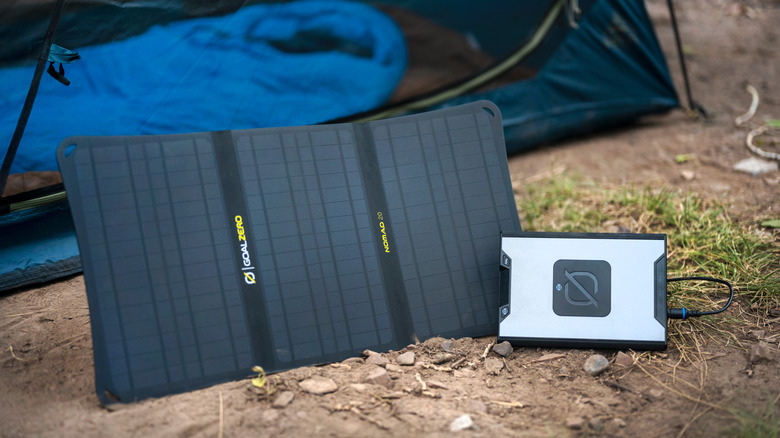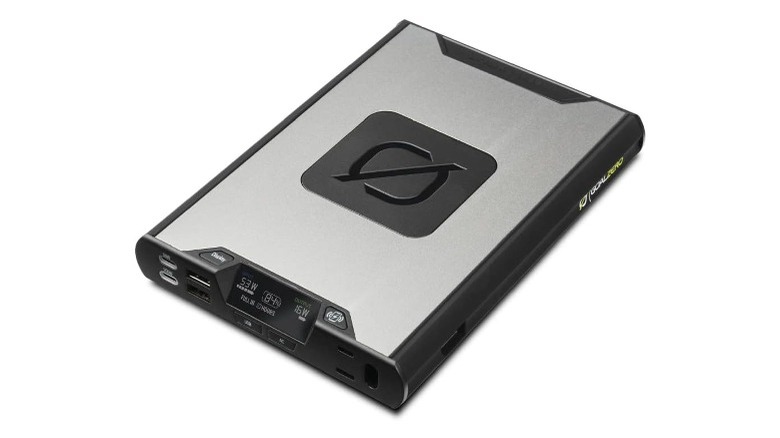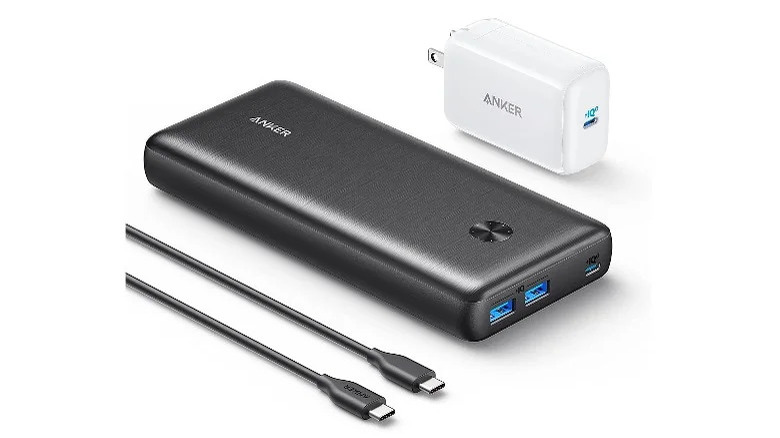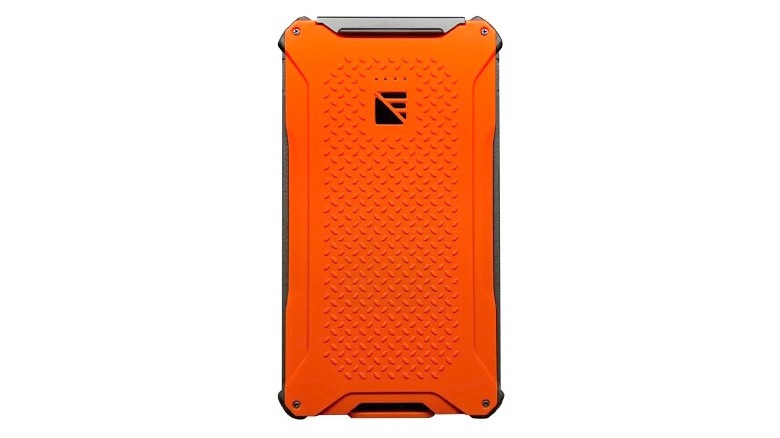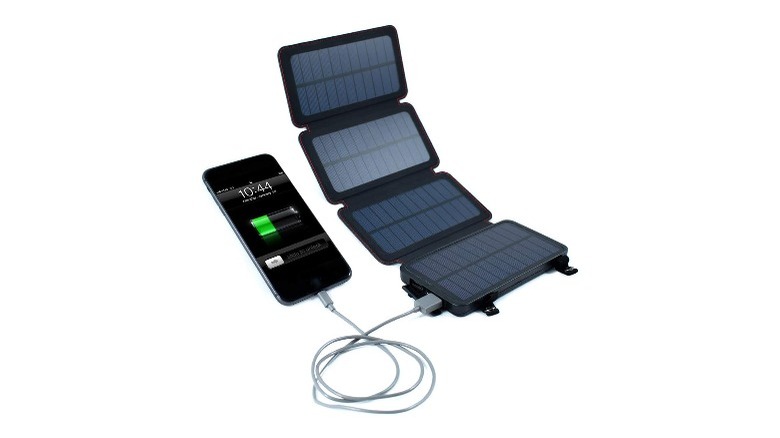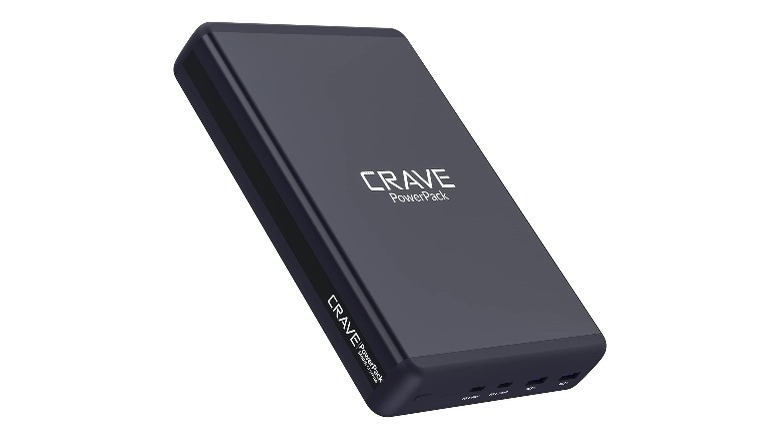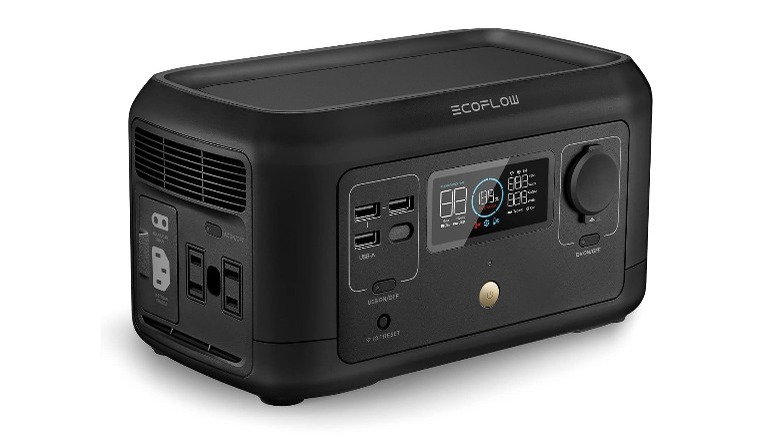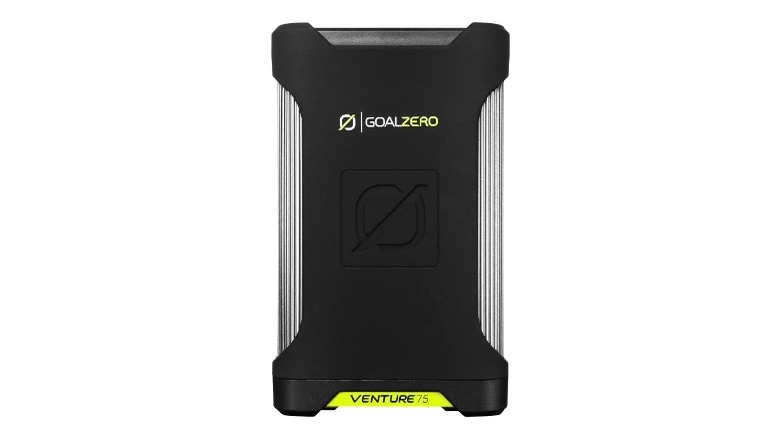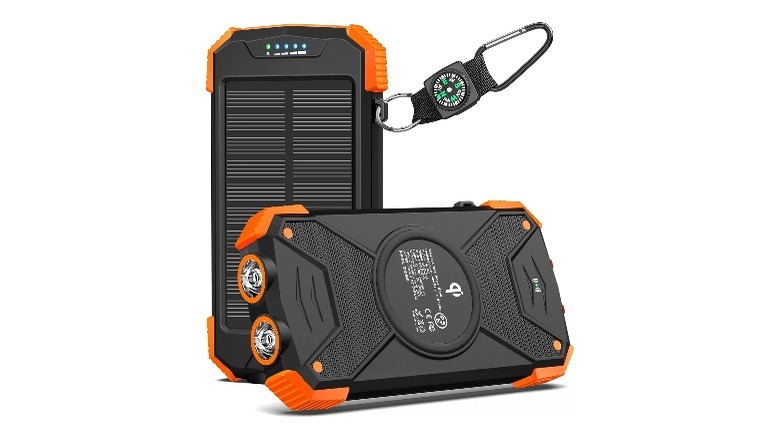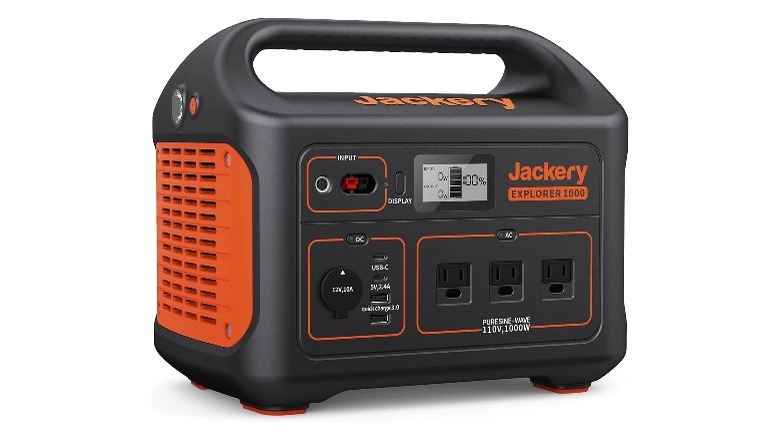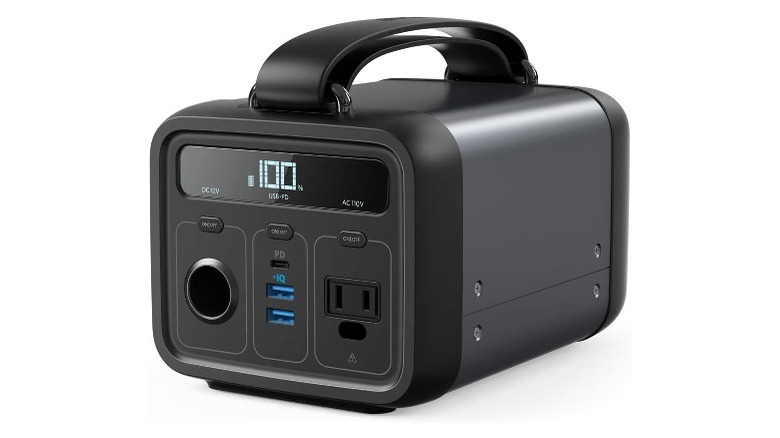10 Of The Best Power Banks And Wireless Chargers For Your Next Camping Trip
We may receive a commission on purchases made from links.
Whether it's for safety or convenience, most campers will be bringing some kind of electronic devices along with them on their outings. Even for trips aimed at getting away from our permanently online world and reconnecting with nature, it's always a good idea to keep a smartphone handy in case of emergencies. And along with it, a power bank for extra charge is also a useful precaution.
Not everyone will want to stay away from their devices while camping, of course — some will want a way to keep their laptops, camera gear, or small appliances running, and will need a suitably heavy-duty source of power to do so. Whether you're looking for a backup power bank on a budget, or are willing to invest in a high-end power station to stay connected in the wilderness, we've rounded up some of the best power banks and wireless chargers, to fit a variety of needs and budgets.
Goal Zero Sherpa 100AC
Campers planning on packing as light as possible will need a power bank that's portable but still packs enough juice to power a variety of devices. The Goal Zero Sherpa 100AC strikes a great balance here: It measures 7.69 x 5.51 x 1.02 inches, and weighs around two pounds, but it'll charge multiple devices at rapid speeds. There's a 15W Qi-certified wireless charging pad, and two USB-C ports, one of which is capable of up to 100W output, and the other up to 60W. There are also two USB-A ports, delivering up to 12W each, and a 110V AC port delivering up to 100W.
That means almost all small devices are covered, and can be charged simultaneously. For additional power, Goal Zero sells compatible solar panels separately. This helps offset one of the Sherpa's main compromises: Its 25,600 mAh battery capacity was designed to remain under TSA limits for airline travel, but that means it's only capable of recharging a demanding laptop like a MacBook Pro once before running out of juice. Also, while we found the power bank's metal and plastic casing to be durable, it isn't as weatherproofed as some of the other options here.
Nonetheless, as a versatile, portable all-rounder, it stands out as one of the best picks for the money. It's currently available to purchase on Amazon for a retail price of $299.95.
Anker 737 (PowerCore III Elite 26K)
Another top pick for quickly charging small devices is the 25,600-mAh Anker 737, which retails for $129.99 on Amazon. We previously featured it in our roundup of the best portable chargers for laptops, because its compact size and 60W USB-C port make it great for charging devices on the go. The 737 weighs just 1.3 pounds, and measures 7.22 x 3.24 x 0.94 inches — ideal for trips where luggage capacity is limited. In addition to the USB-C port, two USB-A charging ports are also available, with a maximum output of 18W each.
Unlike the Goal Zero Sherpa 100AC, the Anker doesn't feature a wireless charging pad, and with only the one USB-C port, it's more limited in the range of devices it can simultaneously charge. However, its battery capacity is the same, and it's significantly cheaper, making it a top pick for campers looking to keep their laptop or other devices charged without breaking the bank.
Dark Energy Poseidon Pro
If power bank durability is a top priority, it's tough to beat the Dark Energy Poseidon Pro. It's IP68-rated, which means it can be submerged in water for up to 45 minutes, and is protected against dust ingress. The company also claims it subjected the power bank to a 50-foot drop and 1,500 pounds of crushing force during its testing process, which the Poseidon Pro survived. It's safe to say that most camping trips are never going to need anything quite so extreme, although the waterproofing should provide an extra level of reassurance on trips in rainier parts of the world.
There's no need to worry about the power bank losing charge over time either, as Dark Energy says it can hold a charge for up to eight years. With a footprint of 6.0 x 3.25 x 0.63 inches, the Poseidon Pro will fit easily into any backpack, making it ideal as a durable emergency backup power pack. There's even a built-in flashlight for said emergencies.
The biggest limitation of the Poseidon Pro is its battery capacity — at 10,200 mAh, it offers less than half the capacity of the comparably priced Anker 737. That said, campers frequently battling the harshest of conditions should find that a compromise worth making. The power bank is currently available from Dark Energy's website for $119.95.
Survival Frog QuadraPro
For campers who prefer to leave most of their tech at home and only bring the necessities, the Survival Frog QuadraPro is a great affordable option. Its 6,500-mAh battery capacity is enough to fully charge a smartphone, and the two USB-A ports and wireless charging pad mean that multiple devices can charge simultaneously. It features four built-in solar panels for solar charging, along with hooks to attach it to a backpack so it can recharge on the move. The company says that recharging the power bank through the solar panels will take around a day.
The panels fold away into the water-resistant leather case when not in use, and when folded, the power bank measures 7.2 x 3.98 x 1.65 inches, making it easily packable. While it lacks the capacity and fast charging capabilities of pricier rivals here, the QuadraPro's $69.97 retail price on Amazon makes it well worth considering for budget-conscious campers looking for a way to keep their phone topped up.
Crave PowerPack PD
For campers heading out on longer trips or needing to charge multiple power-hungry devices, the Crave PowerPack PD's 50,000-mAh battery capacity makes it well worth considering. It features two USB-C ports, one with an output of up to 100W and the other up to 60W. Two USB-A charging ports are also available. A simple LED indicator shows the remaining battery level.
With dimensions of 8.2 x 5.4 x 1.3 inches and a weight of 4.15 pounds, it's not as portable as some of the other options here, but the tradeoff is significantly higher capacity. It's also worth noting that the Crave doesn't offer wireless charging, and it doesn't feature weatherproofing like some of the other power banks on this list. It might be sparse on features, but its asking price reflects that — at $249.99 on Amazon, few power banks offer as much capacity for less upfront cost.
EcoFlow River Mini
The EcoFlow River Mini packs all the ports most campers will need and, thanks to its X-Boost feature, can power devices up to 600W, but it comes with some compromises. First and foremost, it's fairly chunky, measuring 9.8 x 5.5 x 5.2 inches. Still, it's smaller than many rival "portable power stations," but our reviewer noted that the lack of a handle made it somewhat awkward to carry. Its gloss finish also shows dirt and fingerprints, and seems like an odd choice for something designed to be used outdoors. However, its multitude of charging options are what earn it a spot on this list: There are three USB-A charging ports, a 100W USB-C fast charging port, two AC outlets, and a 15W wireless charging pad.
Recharging the station with AC power is quick too, taking 1.5 hours with a 300W charger. There's also an option to recharge with solar panels, with an estimated full recharge time of around six hours. The power station is also compatible with EcoFlow's companion smartphone app, which can be used to control charging speeds and keep an eye on battery levels. The River Mini usually retails for $349.00, but at the time of writing, it's available on Amazon for the significantly discounted price of $169.00.
Goal Zero Venture 75
While the Dark Energy Poseidon Pro still leads the pack when it comes to all-out toughness, the Goal Zero Venture 75 offers nearly as much protection while packing a significantly larger battery. It's IP67-rated, and so can survive submersion in up to 1 meter of water for up to 30 minutes. It also offers the maximum level of protection against dust ingress. That certification earned it a spot on our list of the best power banks for iPhone and Android, although it's just as useful for charging other small devices like camera gear or tablets too.
With 19,200 mAh of battery capacity, the Venture 75 can provide up to five full charges for a smartphone, and its USB-C port ensures quick charging times with up to 60W output. Also featured are two USB-A ports, each with up to 15W output. When the power bank is out of juice, it can be recharged through the USB-C port or through solar panels, which are sold separately. The former option can deliver a full charge in just 1.5 hours.
With dimensions of 6.14 x 3.78 x 1.14 inches, it won't take up much room for campers with limited luggage space either. It might lack the variety of ports that some competitors offer, and the battery capacity could be bigger, but the Venture 75 is a great durable all-rounder for campers needing to charge smaller devices. It retails on Amazon for $119.95.
Blavor Solar Charger
Seasoned campers will want to look for a power pack with more features and higher capacity than the Blavor Solar Charger, but for occasional users, it's a solid budget pick. It's very compact, measuring just 5.9 x 3.1 x 0.8 inches. It features a 10,000-mAh battery and support for charging up to three devices simultaneously. A wireless charging pad delivers up to 5W output, and there's also one USB-C charging port and one USB-A charging port. No fast-charging options are available — the USB-C port only delivers up to 15W output, whereas most pricier rivals deliver at least 60W.
A solar panel is also available for recharging the power pack without plugging in, but it's so small that it's not going to provide any significant level of charge, and should only really be considered a last resort. Combined with the limited battery capacity, that makes the Blavor only really capable of keeping a single smartphone topped up for trips lasting a couple of days. However, in that situation, it's hard to argue with its value — it retails on Amazon for $49.99, but at the time of writing, is discounted to just $28.99, making it by far the cheapest option on this list.
Jackery Explorer 1000
On the opposite end of the spectrum to the Blavor sits the Jackery Explorer 1000, which packs a four-figure list price but makes a convincing argument as to why it's worth shelling out for. It takes its name from its 1,002-Wh capacity, and can double up as a home backup battery for powering appliances in an emergency. There are three AC outlets that can supply up to 1,000W, a 12V DC charging outlet, two 18W USB-C charging ports, and two USB-A ports.
This means the Jackery can be used as a one-stop solution for powering a whole camping setup, although it's worth noting that the 18W USB-C charging is a little underwhelming considering its price tag. Jackery claims recharging times for the power station can be as fast as 5.5 hours for an AC wall outlet or six hours for the two solar panels (which are available at an extra cost), although our testing found those times to be closer to seven and eight hours, respectively.
There's a grab handle on the top of the Explorer 1000 to help lift the power station, and at 22 pounds, it's one of the lighter stations of its type. With dimensions of 13.1 x 9.2 x 11.1 inches, it's a bit of a brick, although many rivals are even bigger. It retails on Amazon for $1,099.00, although it's currently discounted to $999.00. Adding the solar panels takes the total to $1,649.00.
Anker PowerHouse 200
All power banks and power stations are going to come with some sort of compromise, whether that's capacity, charging speeds, upfront cost, or something else. The Anker PowerHouse 200 makes a different set of compromises to most of its rivals, but that might make it all the more appealing to some campers. It offers a decent selection of ports, with a 110V AC outlet, a 12V charging port, a USB-C port and two USB-A ports. Total battery capacity sits at 218.8Wh, which Anker says is enough to charge a smartphone up to 12 times. However, smartphone charging isn't the fastest in class — the USB-C port offers only 30W maximum output.
Where the PowerHouse 200 differentiates itself the most is in its compact size and its looks. Measuring 7.48 x 5.47 x 4.69 inches, and weighing six pounds, it's one of few power stations of its size that could actually be considered properly portable. Also helping its case is the carry handle and metal and rubber casing, which not only looks nicer than most, but feels durable too.
Our reviewer found the single USB-C port to be inconvenient, and the manual buttons to turn ports on and off also grated at first. Quibbles aside though, the PowerHouse 200 makes a solid case for itself as a midway point between conventional power banks and bulky, heavy power stations. Its $249.99 list price on Amazon makes it one of the most affordable chargers of its kind.
